Best parks and gardens in Florence
All you need to know on the the best parks and gardens in Florence.
Secret gardens, public and private parks, and verdant hills, Florence’s reputation for being “green” goes beyond its eco - sustainability efforts.
One of the most beautiful attractions you can discover when you visit the city of Florence, or when you live there, are its historic gardens, especially in the spring, when the beauty of these lush, green spaces reaches its peak.
Here we have collected eleven beautiful gardens in and around Florence, some of them free, where you can wade through flowers and soak up crazy panoramic views!
The garden of Palazzo Pucci
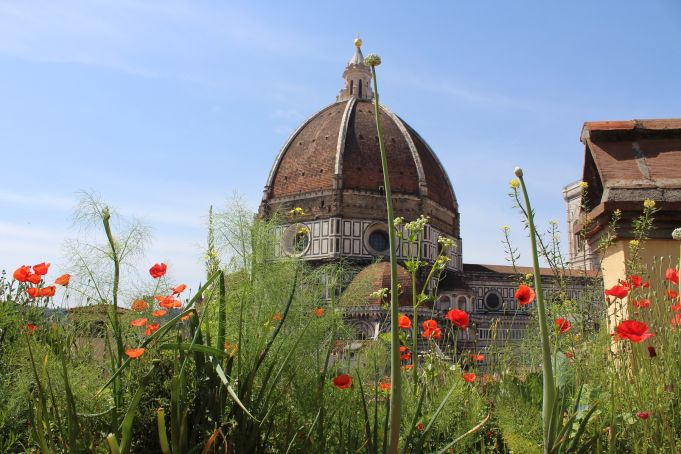
A garden-hanging between sky and earth, between the blue and the red of the roofs of Florence, which dominates from above the entire panorama of the city, up to the surrounding hills. After several steep flights of stairs, and passing through the famous fashion house’s living room, you finally come out onto the terrace.
The initial feeling is that you are in a sort of countryside transported, as if by magic, to the rooftops of Florence. Poppies, cornflowers, strawberries, raspberries, chives, garlic, fennel, marigold, nasturtiums and other wonders, are all cultivated with love by a gardener who follows an organic philosophy and passion for the seeds of Tuscan plants, in a garden that embraces the Duomo. Between smells and colors, delicate poppies and tufts of fennel, you will find yourself in front of the Duomo of Santa Maria del Fiore in all its majesty, with a breathtaking view. This is a place where the beauty of nature reigns, in harmony and silence, in contrast to the chaotic noise of the city; in the heart of Florence, but at the same time as if suspended in the air.
Opening Hours: Call or email ahead of time to guarantee the palace is open to the public. Sometimes it is used as an event space and may be closed for private events.
Address: Pucci Palace: Via de 'Pucci 2. Palazzo Pucci is located in Florence in Via de' Pucci 2, at the corner with Via dei Servi, a few meters from the Duomo.
Phone: +39 055 2398334
E-mail: info@filofirenze.it
How to find it: The area is served by public buses and cabs; from Santa Maria Novella station and the hotels in the center you can reach it in a few minutes on foot.
The Boboli Garden
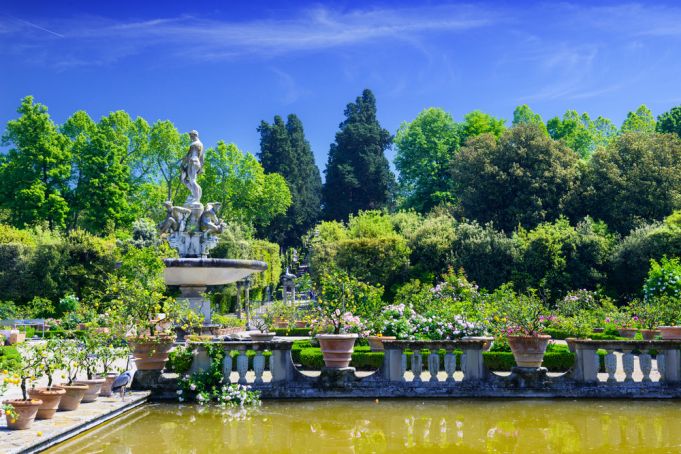
The Boboli Garden did not become famous until it became the property of the Medici family who called Niccolò Pericoli, known as Tribolo, to design it; this artist created a masterpiece of architectural landscape between 1550 and 1558. The park, which is part of Pitti Palace, was designed to occupy a scenic position on the slope of the Boboli hill and also has access from the square. It was later enhanced with innovations by Buontalenti (such as the Grotta Grande), fountains and statues by Ammannati, Giambologna and Tacca, and completed by Giulio and Alfonso Parigi (1631-1656).
The two architects, father and son, executed the amphitheater, the unique setting for famous theatrical performances, the cypress avenue known as "Viottolone" and the square and the small lake of Isolotto. The latest additions, such as the coffee house (1774-76), the lawn of columns and the lemon house (1785) were added by the Lorriane family. Pietro Leopoldo decided to open the garden to the public in 1776. The design of the Boboli Gardens was used as the basis for royal gardens in Europe, including Versailles.
Opening hours: Winter: every day (except Monday) from 9,00 to 16,30. Summer: every day (except Mondays) from 9.00 am to 6.30 pm
Address: Piazza Pitti, 1
Ticket price: 2,50 euros
Phone: +39 055 2651816
Bardini Garden
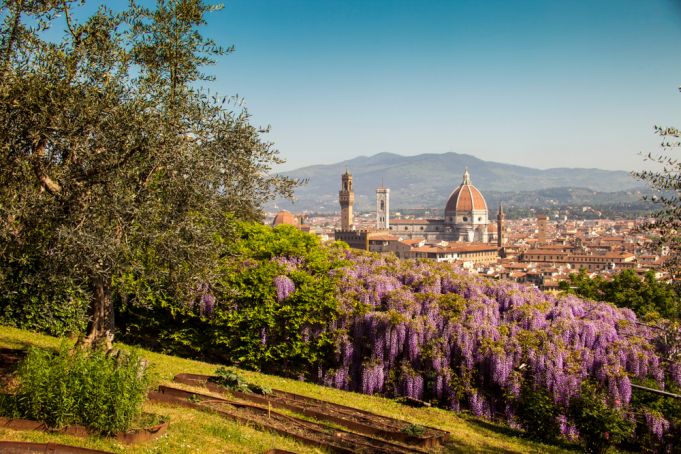
From the Boboli gardens, passing by Costa a San Giorgio, you can visit a recently restored garden: the Bardini gardens. It covers four hectares of parkland between the left bank of the Arno river. The Montecuccoli hill and the medieval walls offer an extraordinary view of the city.
The garden was originally part of Villa Mozzi (which is still the entrance to the garden). In 1700 the garden was enlarged and enlivened with fountains and mosaics, and in the 19th century it was embellished in the Victorian style.
Now, after many years of discussion about inheritance, the intervention of the Ministry of Cultural Heritage, and five years of restoration, the garden has once again acquired its original appearance with rich foliage, large baroque staircases, and six fountains with mosaics, all bordered with roses. In this cinematically green place you can admire expanses of azaleas or camellias, as well as many other types of flowers.
In the agricultural area of the garden you can find fruit trees, a wisteria tunnel and a collection of hydrangeas. It is located in Oltrarno, between Costa San Giorgio and Borgo San Niccolò, and it is famous for the panoramic view of Florence, the wisteria blooming in spring and a perfect combination of art and nature.
Born as an agricultural destination, it was transformed over the years in a typical Italian garden, and then was used in the early twentieth century by its owner Stefano Bardini as a representative environment together with the villa of the same name. Since 2000, it has been owned by the Bardini-Peyron Foundation, created for the recovery of the Bardini and Peyron properties.
Opening Hours: Exceptionally, the Bardini Garden opens from June 2, 2020 to August 30, 2020 every day.
Address: Via dei Bardi, 1 (Piazza dei Mozzi). From the Boboli gardens, passing by Costa a San Giorgio, you can visit the recently restored gardens: the Bardini gardens (otherwise reachable from via de' Bardi n.1).
How to reach Giardino Bardini: in order to avoid the dramatic problem of parking in Florence, the most convenient way to get there is by train to Santa Maria Novella station; from there, the D bus will take you there in about fifteen minutes (Via de' Bardi stop). Facing the steep slope of Via Costa San Giorgio will seem like a walk, but worth it once you enter the enchantment of these gardens.
Ticket Price: 10 euros. The ticket is cumulative with the Boboli Gardens and the Porcelain Museum.Admission is free every first Sunday of the month and from December 1, 2017 for residents in the Metropolitan City of Florence and the provinces of Arezzo and Grosseto.
Parco delle Cascine
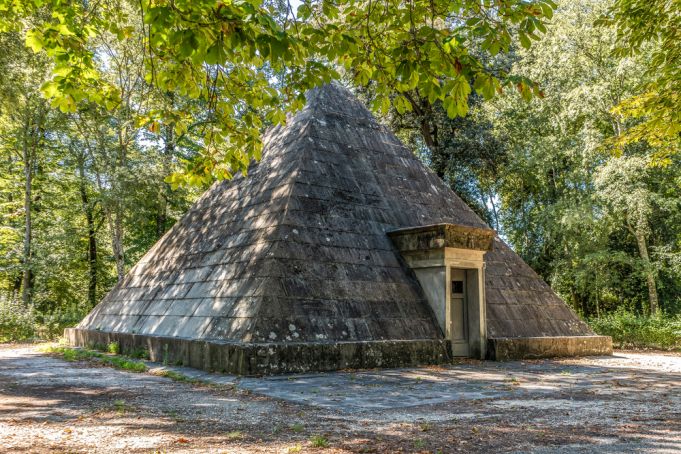
The original foundation of the Isola Estate, known today as Parco delle Cascine, was bought by Duke Alessandro in the mid-1500s. The island was then expanded by Cosimo I de’ Medici. Today's name of the park derives from the presence of farms on the island, which were mostly dedicated to livestock breeding (though one farmhouse is a granary).
Since the beginning of the 17th century the park has been dominated by a majestic avenue of trees, initially known as the Stradone dei Pini and later as the Stradone del Re. Under Pietro Leopoldo the park was reorganized with the addition of garden equipment and a guard house. It was also open to the public, but only for special events and Ascension Day.
It was conceived essentially as a wilderness area of which the only fixed structure was a hunting lodge built by Manetti G. in 1786 where the archduke and his family lived. The following year, on the occasion of the marriage of Archduchess Maria Theresa, all of the old buildings were demolished. In the second half of the 18th century Archduchess Elisa made the garden public, thus giving the city a vast green area very different from the gardens of the city's palaces.
The Archduchess also made a new entrance to the park on Porta al Prato, where the Baluardo del Serpe was hung. In the meantime the road parallel to the river was paved and made completely straight. In the 19th century the Cascine gardens were designed in a romantic style and looked very different from what they are today.
In addition, during the 19th century large areas of the park were transformed into sports areas, including running tracks. Ph: AlexMastro / Shutterstock.com
Opening Hours: always open
Ticket Price: Free
Address: Piazzale delle Cascine
The Iris Garden
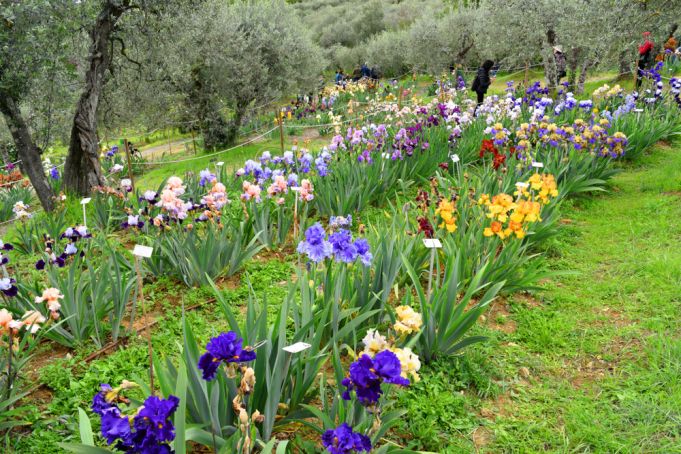
This garden has more than 2,500 varieties of flowers that have been a symbol of the city since 1251. Here, near Piazzale Michelangelo, urban life and the countryside merge: ancient olive trees coexist with roses, columbines and wild flowers. The intervention of man is almost imperceptible and the undisputed protagonists are the Irises sent from all over the world. This is one of those spaces unknown to tourists, many are naive to its existence until they hear about it. In a panoramic space of about two and a half hectares, among olive trees and small lakes, with a wonderful panoramic view of Florence, the garden hosts the best varieties of irises in the world.
In fact, every year an International Competition organized by the Italian Iris Society takes place here, aimed at electing the most beautiful hybrid variety of iris. Walking through the garden perhaps you’ll see the winning species of years past.
Opening hours: open from May 2 to May 20 (Monday to Friday: 10-12,30; 15-19. Week-End: 10-19. The garden is open only one month a year, usually from the end of April until the end of May, during the flowering period.
Address: Viale Michelangelo, 82. The entrance to the Iris Garden in Florence is located at the point where Viale dei Colli opens to Piazzale Michelangelo.
Admission is by free donation.
Phone: +39 055 483112
The Rose Garden
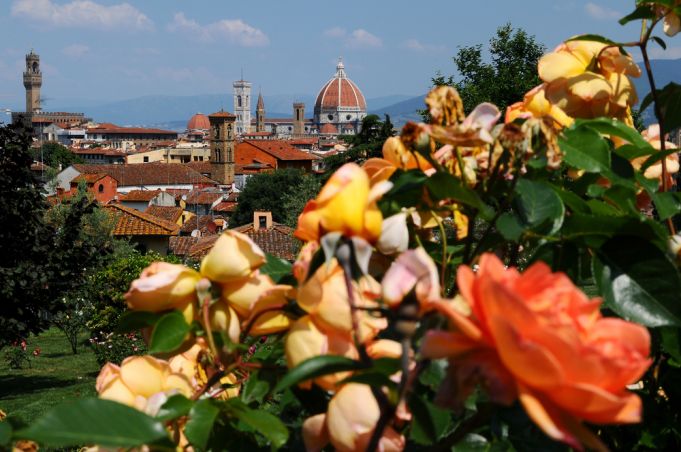
In 1865 the city of Florence asked Giuseppe Poggi, the architect who designed the reconstruction of what was to be the capital of the Kingdom of Italy, to devote his attention to the left bank of the Arno River. It was inaugurated in May 1895, during the Festival of Fine Arts, when Poggi offered a magnificent view of the city. Entering the rose garden is like passing through a magic door.
It is cosy and sloping and hosts many varieties of roses, a very small Japanese garden and some works of the artist Folon. The best time to visit is from May to June, when the roses are in bloom, but it can be appreciated at any time of the year. The panoramic view of Florence from the rose garden is nothing short of spectacular and is perfect for relaxing on the lawn reading a good book or chatting with friends.
Enter by way of the left side of Piazzale Michelangelo (it is located at the bottom of a steep staircase), and exit through the entrance on San Niccolò. The Rose Garden of Florence is located under Piazzale Michelangelo, is free admission and is a real window overlooking the city.
Address: Viale Giuseppe Poggi, 2, 50125 Florence FI.
Opening hours: Year round, but our recommended visit time is in May
Free entrance.
Phone: +39 055 2625342
The Garden of Horticulture and the Gardens of Parnassus
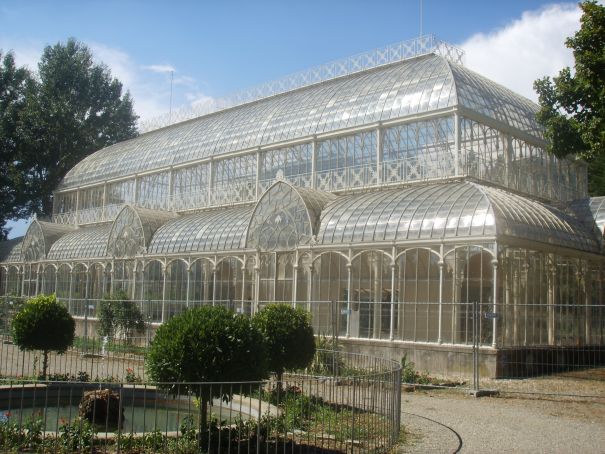
Florence's Horticultural Garden is a green space, born in the mid-nineteenth century, that is perfect for a walk, a picnic or a summer aperitif. We consider it a secret garden, off the beaten path, located between Via Bolognese and Via Vittorio Emanuele.
What makes this garden special is definitely its tepidarium, a beautiful glass and steel greenhouse in Art Nouveau style, designed by architect Giacomo Roster, which is often used for exhibitions and special events. There is an area inside dedicated to children, a library, the Loggetta Bondi and large lawns for lounging.
When you reach the upper part of the Garden of Horticulture, you will have arrived at the Gardens of Parnassus. A space adorned with a scenic staircase in the shape of a dragon and from which you can enjoy a beautiful panoramic view of the Duomo of Florence.
Every year in spring, the Società Toscana di Orticoltura (Tuscan Horticultural Society) organizes the Mostra Mercato dell'Orticoltura (Horticultural Exhibition), a fixed appointment in the calendars of all plant and flower enthusiasts.
Opening hours: from 8:00am to 8:00pm
Address: Via Vittorio Emanuele II, 4, 50139 Florence.
Free entrance.
Phone: +39 055 483 698
Giardino dei Semplici Botanical Garden
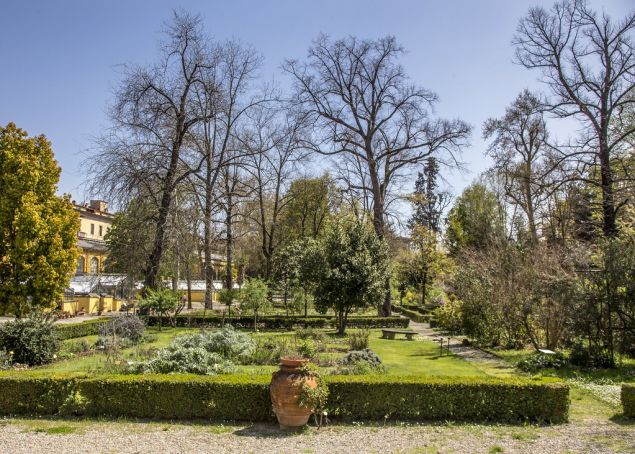
The Giardino dei Semplici is part of the Museum of Natural History of the University of Florence. It is located a few steps from Piazza San Marco and is the third oldest botanical garden in the world, after the botanical gardens of Pisa and Padua.
It was founded in 1545 by Duke Cosimo I de' Medici with the aim of studying the natural world from close up. As in fact the name itself proclaims ("semplici" from the Latin simplex, a word that indicates all those plants that can be used for medicinal purposes), the garden has always had an academic purpose.
At the Botanical Garden one can come into contact with numerous rare and exotic specimens of plants, as well as wild herbs, azaleas, an ancient collection of citrus plants, climbing roses and an imposing yew tree planted in 1720. The garden holds about six thousand plants, in less than two hectares of land, and consists of nineteenth-century greenhouses, a small Zen garden, a library and a laboratory. It is a small and precious oasis sheltered from the city chaos.
Opening hours: Monday, Wednesday, Friday, Saturday from 9:00 to 12:00pm
Address: Via P.A. Micheli, 3
Phone: +39 055 275 6444
Ticket price: free
The Oricellari Gardens
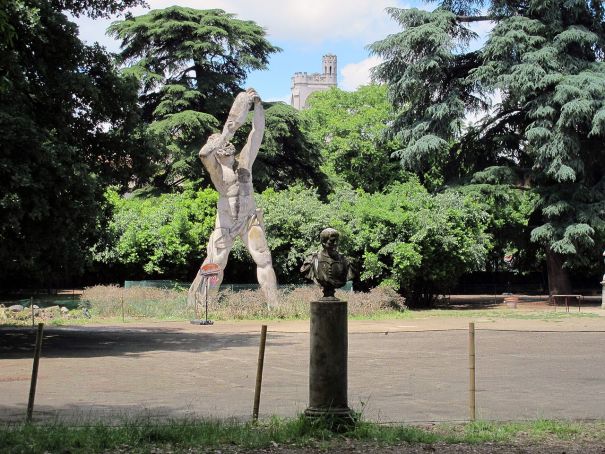
Another garden in Florence that we consider secret and is the Giardino Oricellari, near Santa Maria Novella. Its history is rather troubled and full of changing hands. The garden dates back to 1400 and was built by the Rucellai family, from which it takes its name. Its initial purpose was to host the meetings of the Platonic Academy of Florence which included some of the greatest Italian artists and thinkers such as Niccolò Machiavelli and Jacopo Nardi.
After a period of disuse, Bianca Cappello brought it back to its ancient splendor, transforming it into a place of parties, games and jokes organized by the grand dukes for their guests. During the mid-seventeenth century, Cardinal Giovan Carlo de 'Medici began the first major series of works, creating a garden with an Italian-style planting scheme. The garden underwent a further transformation at the beginning of the nineteenth century, approaching, by the architect Louis Cambray Digny, a typical English garden. While, in 1861, a new change of ownership marked another transformation of the garden as we see it today.
The heart of the Orti Oricellari is the fountain with the majestic statue of Polyphemus drinking from Novelli's wineskin, once situated on an artificial lake; also not to be missed are the Grotto of the Nymphs and the Winds and the Temple of Flora.
The current gardens extend from Via degli Orti Oricellari to Via Bernardo Rucellai, and are currently owned by the Cassa di Risparmio di Pisa.
Address: Via Bernardo Rucellai, 6, 50123 Florence.
Free entrance, by appointment only at + 39 055 266991
Il Giardino Torrigiani
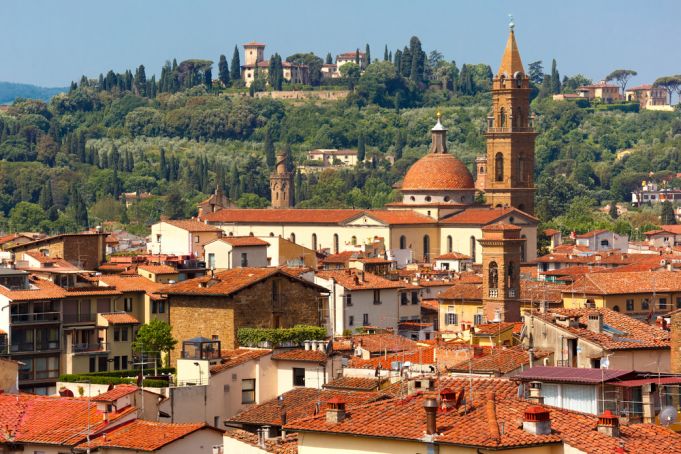
One of the gardens to visit as soon as possible is a private garden belonging to the Torrigiani di S. Cristina and Torrigiani Malaspina families. This is the largest private park within the ancient walls of Florence, a splendid example of a romantic garden in full nineteenth-century style.
The Torrigiani Garden is located in Via dei Serragli, in Oltrarno, and is part of the complex of the building called Casino Torrigiani al Campuccio. It was created in the 16th century as a Botanical Garden and extends for about ten hectares.
Towards the end of the 19th century, it was expanded by Pietro Torrigiani, from whom it takes its name. The project was entrusted to the architect Luigi Cambray Digny and later to Gaetano Baccani who created the typical English garden, rich in esoteric symbolism related to Freemasonry, to which the Marquis Pietro Torrigiani himself was affiliated.
Inside we find secular plants from different parts of the world, as well as greenhouses and lemon houses. The garden also contains a sacred wood that, in turn, hosts the Sepulchre, the Temple of Arcadia, the Gymnasium and other surprises.
Among the first elements that captures the attention, however, is the neo-Gothic tower, symbol of the Oltrarno district. The tower is 22 meters high and contains a library and a small astronomical observatory. It is said that the division into three levels represents the three degrees of the initiation process of Freemasonry.
Not to be missed are also the citrus garden, Merlin's cave, the small amphitheater and the ossuary. In 1839 as many as 5,500 plants were inventoried in the greenhouses and over 13,000 plants in the ground including fruit trees, magnolias, pines and cypresses!
Through the guided tour, you will not fail to notice the symbolism linked to Freemasonry that characterizes many elements of the garden. The park represents a sort of esoteric path in nature.
Ticket Price: Adult, 25 euros. Children, 3 euros. By appointment only.
Address: Via dei Serragli, 144
Phone: +39 055/224527
E-mail: info@giardinotorrigiani.it
The garden at Villa di Castello
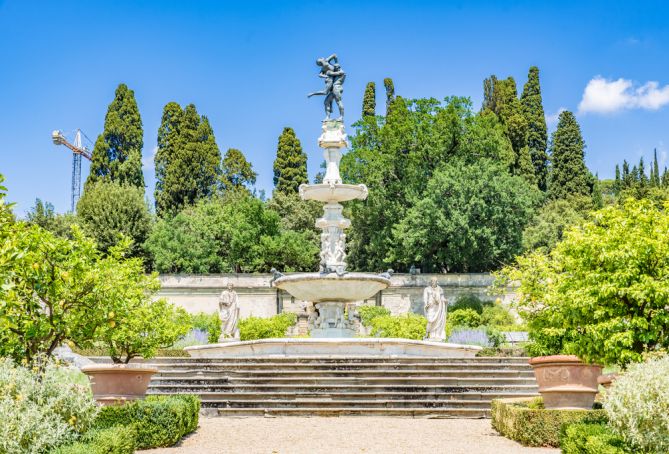
Did you know that Botticelli's Birth of Venus and Spring were commissioned to adorn the interiors of Villa Reale? Oh yes: Villa medicea di Castello, also known as Villa Reale, and a few kilometers from Florence, holds many secrets and a prestigious history that not everyone knows.
The villa in existence since 1300, was purchased by a minor branch of the Medici family in 1477; then, after being the residence of Grand Duke Cosimo I, the main architect of the gardens, it passed to the Lorraine family, upon the extinction of the Medici dynasty.
Currently the villa, which can be visited only on special occasions, is home to none other than the Accademia della Crusca, while the gardens can be visited any time with free admission.
The gardens of Villa Reale are still the best preserved example of the famous "Italian garden". Some elements have a fifteenth-century taste, such as the compact and geometric shape of the flowerbeds, arranged on three terraces sloping towards the back of the villa, but there are also many valuable additions of the following century, such as the Grotto of the Animals, the rustic figures and the presence of water.
In 1538 Grand Duke Cosimo I de' Medici had the villa renovated by Giorgio Vasari and commissioned Niccolò Tribolo to design the garden, which was to be a place of magnificence to be used as political representation and propaganda, a sort of reflection of the Grand Duke's power.
The garden was one of the first great examples of the Italian garden and had a great influence on the art of gardening afterwards; it became a model of the ideal garden, already starting from its most direct descendant, the Boboli Garden, which was then realized by Tribolo as well.
Actually, this marvellous garden, unfortunately little known and with restoration works that have been stopped for years, is really a miniature Boboli, in a more graceful and less dispersive version.
Opening hours: From Monday to Friday 8:30am - 1:30 pm (last entrance at 1:00pm)
Address: Via di Castello, 44
Phone: +39 055 452691
Email: drm-tos.giardinocastello@beniculturali.it
Main ph: Anamaria Mejia / Shutterstock.com




















